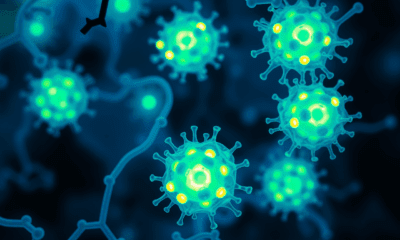While we try to keep things accurate, this content is part of an ongoing experiment and may not always be reliable.
Please double-check important details — we’re not responsible for how the information is used.
Cancer
“Visualizing Cell Communities with NicheCompass: A Breakthrough in Personalized Cancer Treatment”
An openly available generative AI tool can interpret millions of cells in human tissues in hours, revealing new insights and allowing researchers and clinicians to ask questions about conditions such as cancer.

Cancer
The Toxic Truth About Recycled Plastic: Over 80 Chemicals Found in a Single Pellet
Recycled plastic pellets can release a hidden mix of over 80 chemicals into water, disrupting hormones and fat metabolism in zebrafish larvae. Researchers warn that unknown and toxic additives make current recycling practices dangerously unpredictable.
Blood Clots
“Flaws in AstraZeneca’s Research Exposed: FDA Approval for Ticagrelor Called into Question”
Fresh concerns have emerged about the platelet studies underpinning the FDA approval of ticagrelor, AstraZeneca’s multibillion-dollar heart drug. A new BMJ investigation reveals data discrepancies, missing lab readings, and questions about the integrity of the trial process. Notably, key results reported in a major cardiology journal were inaccurately presented, and some study contributors were omitted or denied involvement. With generics on the horizon, critics say these revelations highlight potential dangers, including severe rebound effects and bleeding risks, that were never properly disclosed.
Alternative Medicine
A Simple One-Minute Self-Exam Could Save Young Men’s Lives: What You Need to Know
A new survey shows most Americans wrongly think testicular cancer is an older man’s issue, despite it most commonly affecting men aged 20 40. Early detection is key but misconceptions about symptoms and screening remain widespread.
-

 Detectors2 months ago
Detectors2 months agoA New Horizon for Vision: How Gold Nanoparticles May Restore People’s Sight
-

 Earth & Climate4 months ago
Earth & Climate4 months agoRetiring Abroad Can Be Lonely Business
-

 Cancer3 months ago
Cancer3 months agoRevolutionizing Quantum Communication: Direct Connections Between Multiple Processors
-

 Agriculture and Food3 months ago
Agriculture and Food3 months ago“A Sustainable Solution: Researchers Create Hybrid Cheese with 25% Pea Protein”
-

 Diseases and Conditions4 months ago
Diseases and Conditions4 months agoReducing Falls Among Elderly Women with Polypharmacy through Exercise Intervention
-

 Albert Einstein4 months ago
Albert Einstein4 months agoHarnessing Water Waves: A Breakthrough in Controlling Floating Objects
-

 Earth & Climate3 months ago
Earth & Climate3 months agoHousehold Electricity Three Times More Expensive Than Upcoming ‘Eco-Friendly’ Aviation E-Fuels, Study Reveals
-

 Chemistry3 months ago
Chemistry3 months ago“Unveiling Hidden Patterns: A New Twist on Interference Phenomena”





























